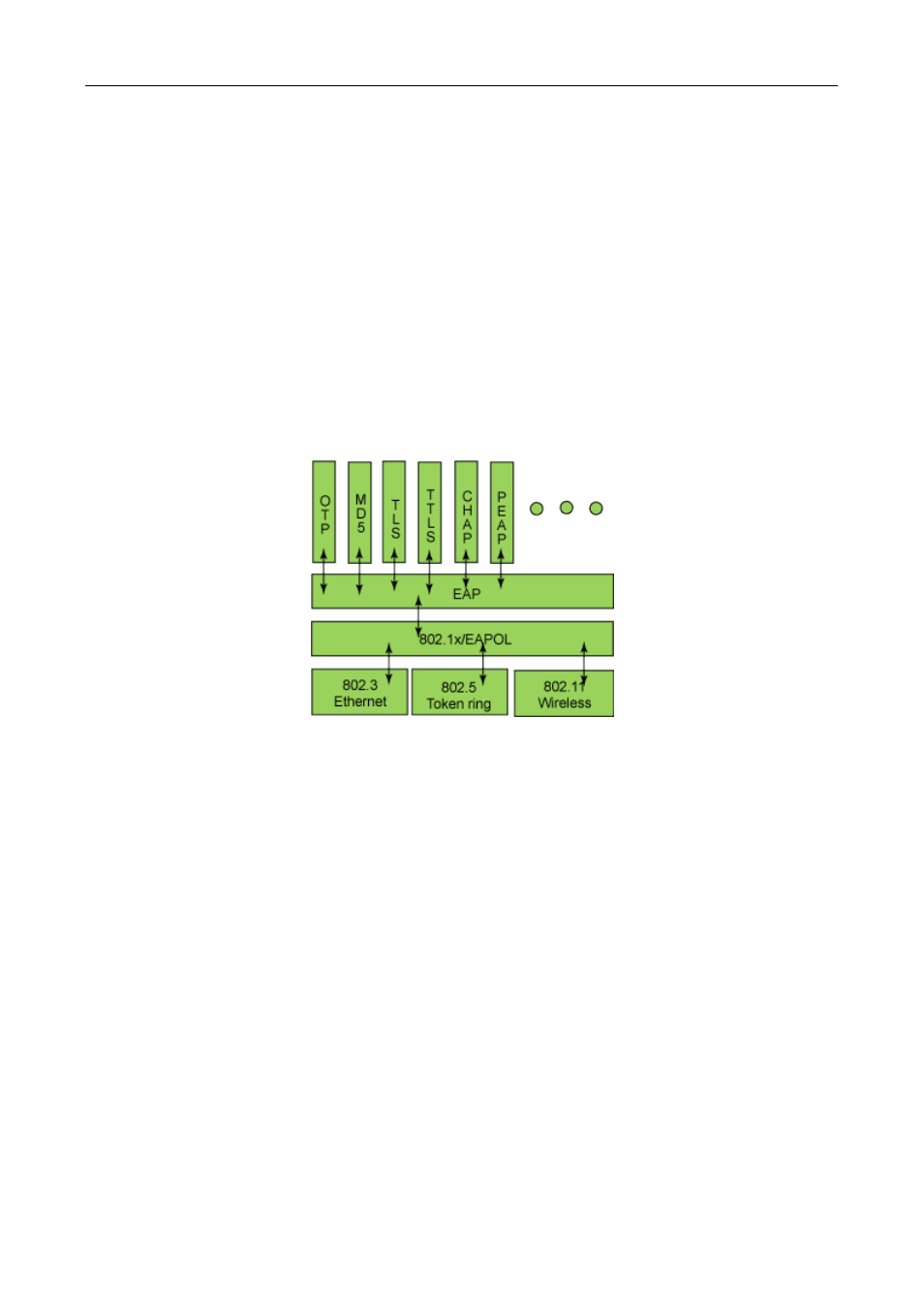1 eap relay mode – PLANET XGS3-24042 User Manual
Page 520

52-6
the remote RADIUS server. The following is the description of the process of these two authentication
methods, both started by the supplicant system.
52.1.5.1 EAP Relay Mode
EAP relay is specified in IEEE 802.1x standard to carry EAP in other high-level protocols, such as EAP over
RADIUS, making sure that extended authentication protocol messages can reach the authentication server
through complicated networks. In general, EAP relay requires the RADIUS server to support EAP attributes:
EAP-Message and Message-Authenticator.
EAP is a widely-used authentication frame to transmit the actual authentication protocol rather than a special
authentication mechanism. EAP provides some common function and allows the authentication mechanisms
expected in the negotiation, which are called EAP Method. The advantage of EAP lies in that EAP mechanism
working as a base needs no adjustment when a new authentication protocol appears. The following figure
illustrates the protocol stack of EAP authentication method.
Figure
52-8
the Protocol Stack of EAP Authentication Method
By now, there are more than 50 EAP authentication methods has been developed, the differences among
which are those in the authentication mechanism and the management of keys. The 4 most common EAP
authentication methods are listed as follows:
EAP-MD5
EAP-TLS(Transport Layer Security)
EAP-TTLS(Tunneled Transport Layer Security)
PEAP(Protected Extensible Authentication Protocol)
They will be described in detail in the following part.
Attention:
The switch, as the access controlling unit of Pass-through, will not check the content of a particular
EAP method, so can support all the EAP methods above and all the EAP authentication methods
that may be extended in the future.
In EAP relay, if any authentication method in EAP-MD5, EAP-TLS, EAP-TTLS and PEAP is
adopted, the authentication methods of the supplicant system and the RADIUS server should be